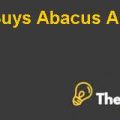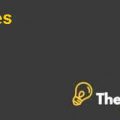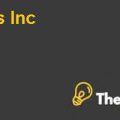Analysis of financial statements of charter company Case Study Solution
INTRODUCTION
The Charter Company was established in 1959 as a consolidation of several existing corporations. The primary line of the business was petroleum production and marketing. The company was progressing well and it was evident from the fact that in 1982 the revenue was $4 billion whereas in 1983 it became $5.7 billion. The revenue from continued operations in 1982 was $29.8 million whereas in 1983 it became $50.4 million. Charter used to maintain his dividend at $0.25 per share from the second quarter of 1980.However, things turned out to be worse when several articles were published in the Financial Press and the articles started questioning the reliability of financial statements.
The news in Financial Press led to the company facing difficulties in trading as several unfavorable events occurred one after another. The consequences of this news were so severe that the company’s share price decreased sharply. The share price was$9.5 in first quarter April 1984 whereas it further declined to $6.625 and it steadily further decreased to $3.25 by the end of April. These events were shocking for the company as it was trading smoothly and was making good financial results. The investors took notice of the news in Financial Press and the share price of the company declined as the people were casting doubts on the reliability of the financial statements of Charter Company as their auditors were issuing clean audit report to the company.
Analysis of financial statements
The financial position of the company was quite good before the news in the Financial Press was made public as the company enjoyed good profits and income from its continuing operations.
- Profitability ratios:
The profitability ratio mainly includes the return on average total assets of the company. The company’s return on average total assets is volatile as in 1980 it was approximately 7.84% whereas in 1981 it declined to 5.59% which is a decline of approximately 2.25%.This is a huge decline and is considered significant for the company. The company was facing difficult time and in 1982 the ratio declined further to 5.49%.Then the company somehow managed to push its ratio to 7.39%. The company was suffering due to the market news and these are the effects of the news which made the company’s financial health to worsen further.
- Turnover:
The company’s turnover mainly includes the accounts receivable turnover, inventory turnover and total assets turnover.
The accounts receivable turnover is stated in days and the company seems to have no credit control as sometimes its debtors take more time to pay whereas sometimes they take less time to pay. The debtors were paying the company in 30 days in 1980 whereas in 1981 they were paying earlier and the accounts receivable days decreased to 27 but in 1982 it again became 30 days and in 1983 the debtors were taking 22 days to pay the company. There must be some credit control by the company so that the cash can be managed easily as the company is suffering from crisis so cash is very crucial for its operations. (Bragg, 2017)...................
This is just a sample partial work. Please place the order on the website to get your own originally done case solution.









